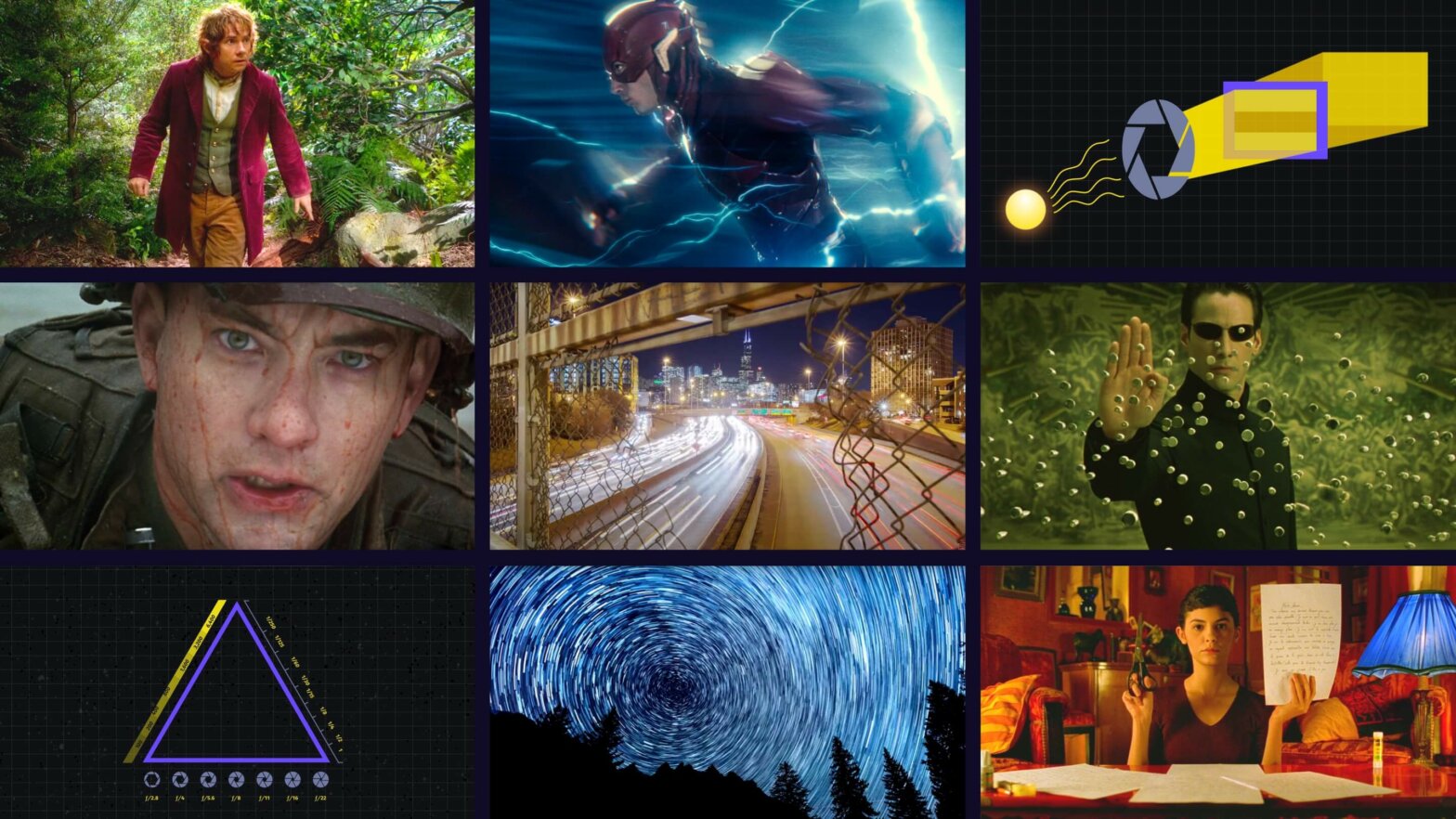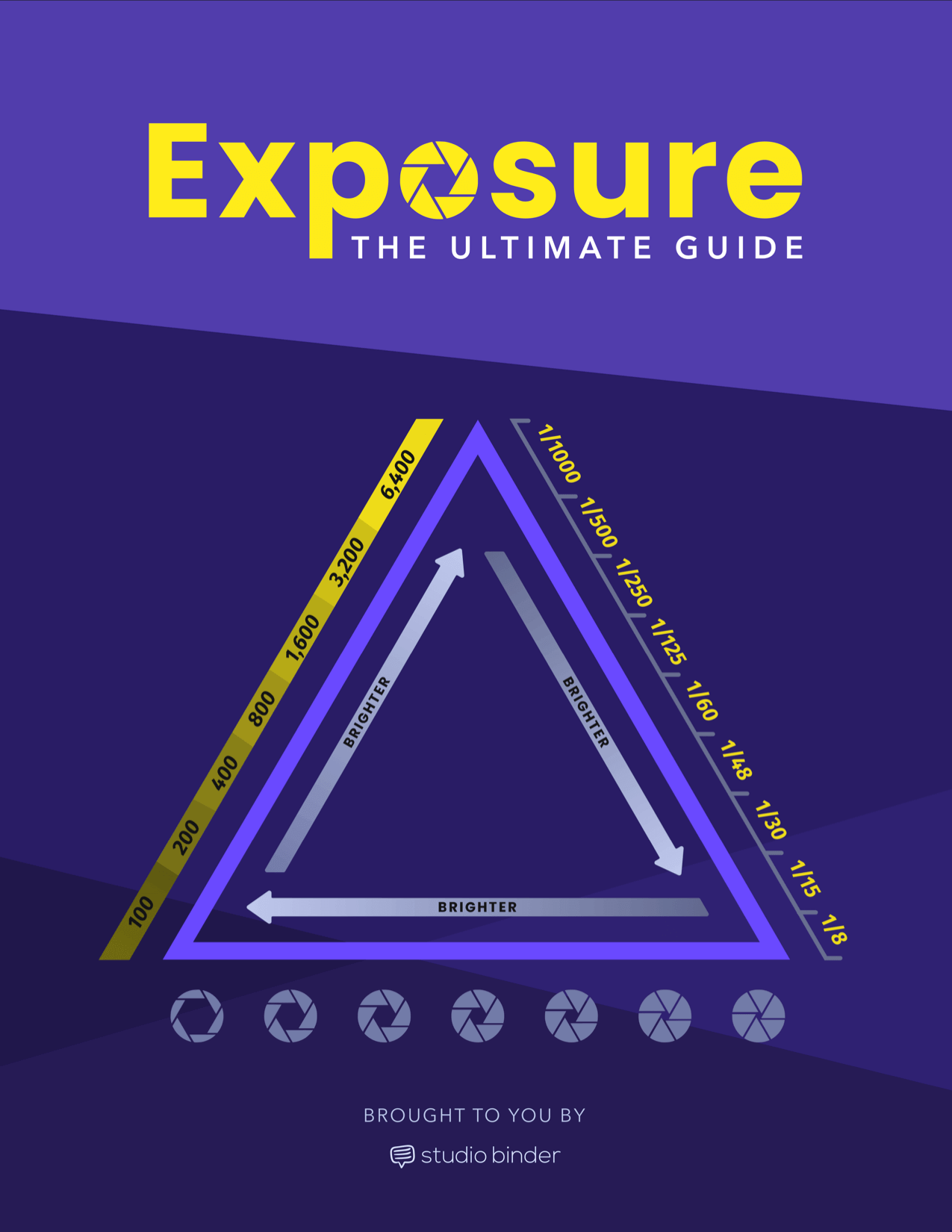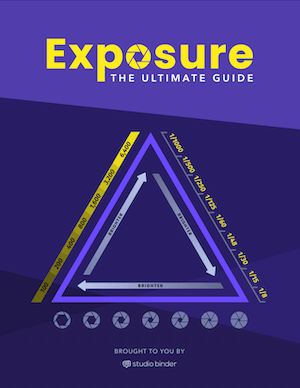We all know the sound that a camera makes. That satisfying click when we press the button and create our photograph. What we’re hearing is the camera’s shutter. That sound is the shutter moving up and down. It moves the same way every time we take a photo, but not always at the same speed. The way our pictures come out depends on that speed. So what is shutter speed? How can we understand it to take intentional and consistent quality pictures each time. Let’s jump in.
Defining Shutter Speed
Shutter speed explained
A camera takes a photo by exposing film (or a digital sensor) to the light. The shutter acts like a barrier — it stays closed to keep the light out when you’re not taking a picture. When you hit the shutter release button on the camera to take the picture, the shutter opens and captures the image, and closes when it’s finished.
That's the basic function of the camera shutter. Like any other camera function, there are creative ways to use it which will get to shortly. In the meantime, here's a shutter speed definition to give us a starting point. It may seem obvious but "What is shutter speed" is a common question. The answer is simple but the effects are a bit complicated.
SHUTTER SPEED DEFINITION
What is shutter speed?
Shutter speed is how long the camera shutter is open, exposing the image to light, typically measured in milliseconds to minutes. If the shutter is left open for a long time, a lot of light is being let in, which could overexpose the image. When there are moving subjects in your photo, a slow shutter speed could cause motion-blur. If the speed is quick, it’s likely the picture will come out too dark.
These speeds are measured in fractions of a second. ½ means "one half of a second," while 1/250 means "one two-hundred-fiftieth of a second." The smaller the number (the higher the denominator), the faster the shutter speed. Conversely, the higher the number, like whole numbers from 1 to 30 seconds, are considered slow shutter speeds.
What does shutter speed control?
- Exposure — depending the lighting conditions, a slow shutter will brighten the image and a fast shutter speed will darken it.
- Motion — the slower the shutter speed, the more motion blur you'll create. The faster the shutter, the motion will appear sharp and jittery.
Most mirrorless and DSLR cameras have a large range of shutter speeds. It usually depends on the quality of the camera. Most DSLRs can go from 1/4000th to 30 seconds. While some can climb to 1/8000th, depending on the model. This is just one of the differences between DSLRs and mirrorless cameras.
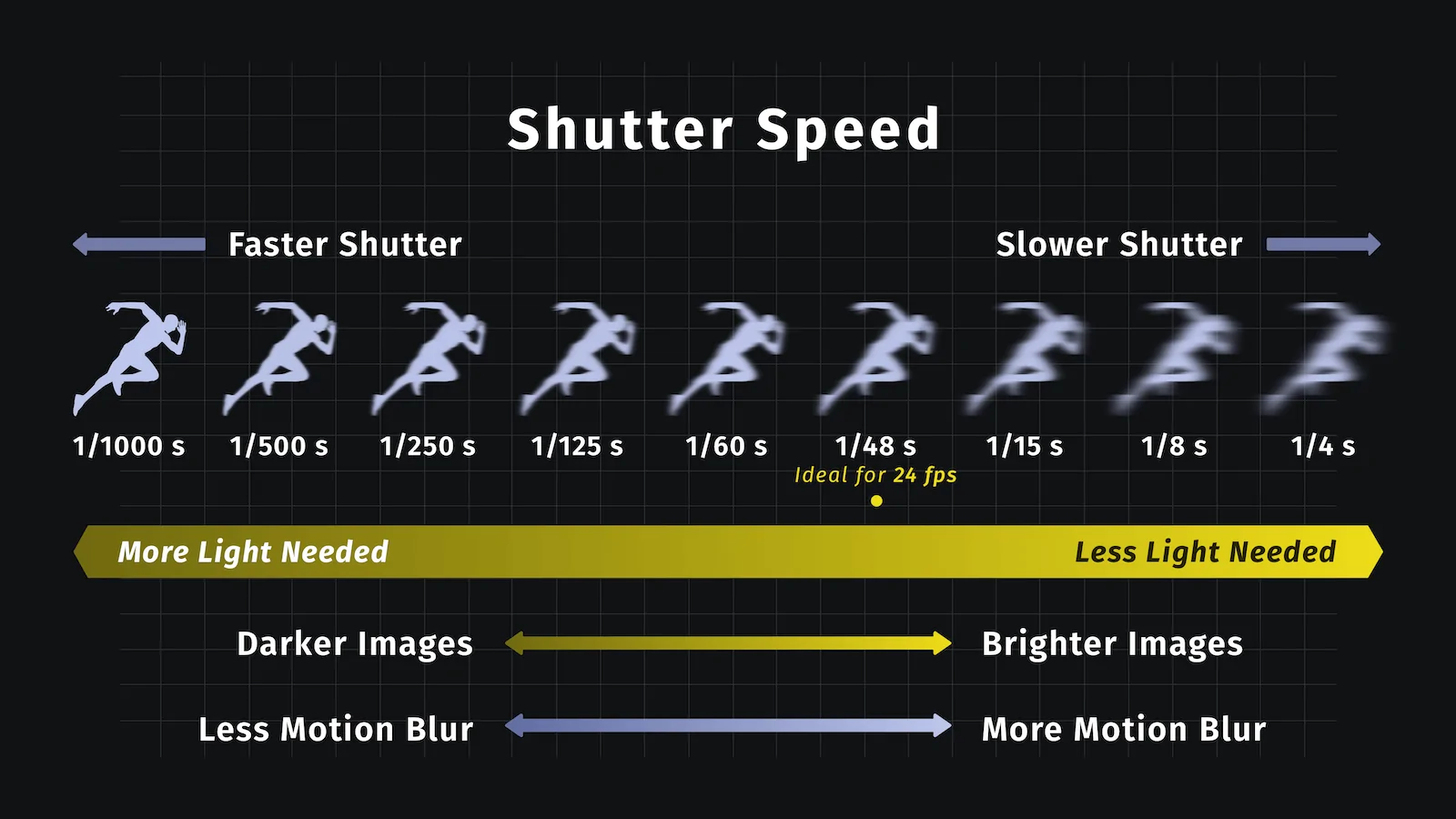
Shutter Speed Effects
With our shutter speed definition established, let's get into some of the technical aspects. These include the types of camera shutters, either mechanical, digital or a hybrid, and then we'll cover the creative applications of slow and fast shutter speed.
Understanding Shutter Speed
Types of camera shutters
While the general process of shutter speed is similar across photography and video, and between analog and digital cameras, the types of camera shutters need a bit of explanation. Let's start with mechanical shutters.
Rotary Disc Shutter
In the good old days of celluloid filmmaking, the cameras and projectors used what's called a rotary disc shutter. This is a disc with one or more openings that rotates to block and unblock the light from the filmstrip.
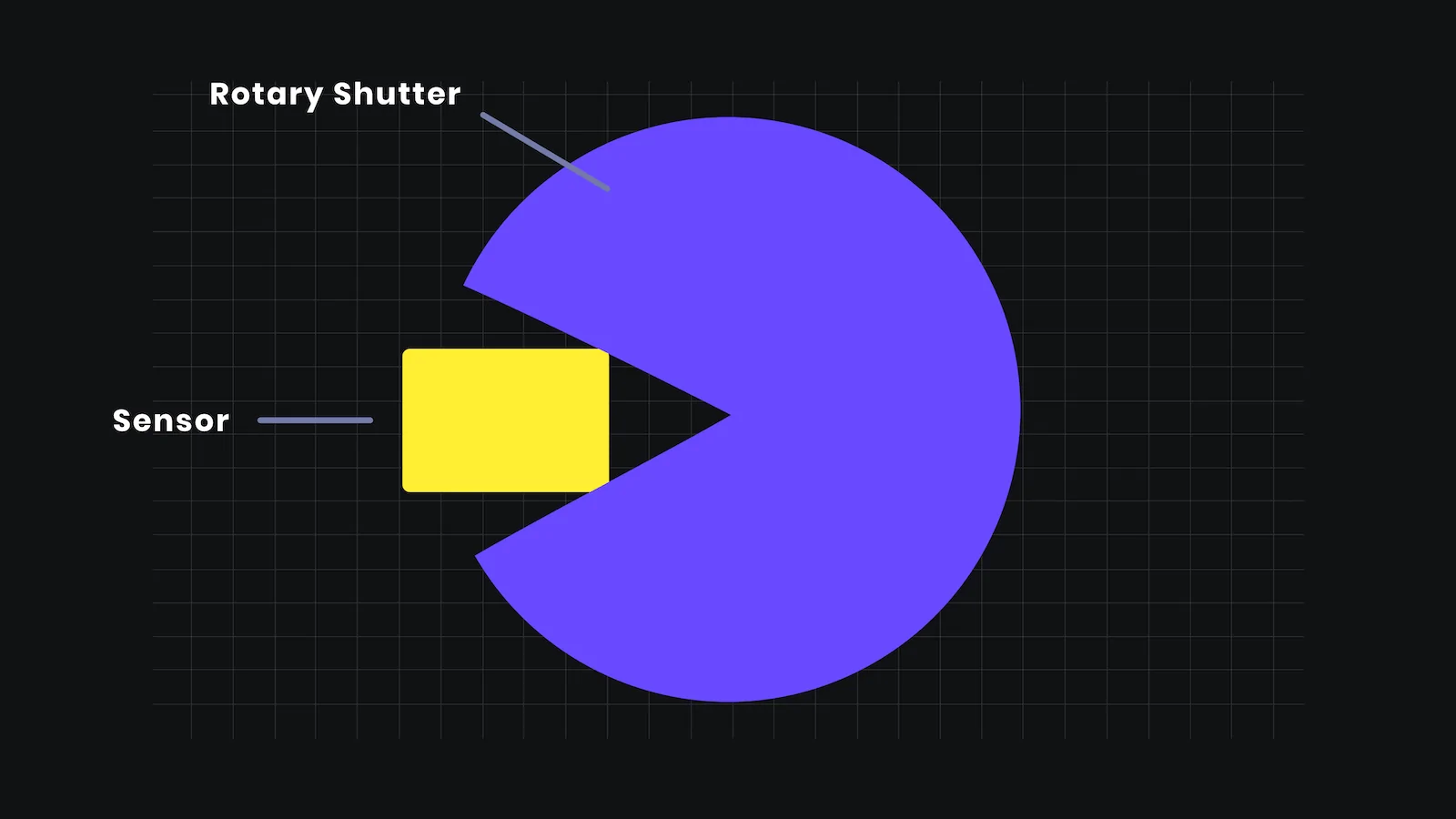
Rotary Disc Shutter
The opening on this disc is typically set at 180 degrees (more on that later) but it can usually be adjusted to anything between 0 and 360 degrees. In this video, you can see that adjustment being made.
Rotary Disc Shutter in Action
Focal Plane Shutter
In photography, cameras typically have a focal plane shutter. These work with two shutters — one to drop down, exposing the frame, before a second shutter blocks the light once again. In this video, you'll see this process in slow motion.
Focal Plane Shutter in Action
Leaf Shutter
There's one other mechanical shutter type to discuss — the leaf shutter. These function similarly to the lens aperture, as multiple blades expand away from or contract into the center of the image plane. Here's another slow motion video to illustrate this.
Leaf Shutter in Action
With the rise of digital cameras came a new kind of shutter. In fact, shutter speed in digital cameras is more a function of the camera sensor. The camera's sensor is populated with thousands receptors called pixels. These are in charge of collecting the light when the images are recorded, but until then, they're "off."
When the shutter release button is pressed, the pixels turn on and off for a pre-determined amount of time, this is how shutter speed works in the digital realm.
Many digital cameras use both a mechanical and digital shutter and there are two main types of shutter settings to know: rolling and global.
Rolling Shutter
With a rolling shutter, the pixels are turned on sequentially, for example, from the top left corner down the bottom right corner, or top to bottom horizontally. Rolling shutters are known to create less "noise" in the image as well as a wider dynamic range, which can lend a more "cinematic" feel.
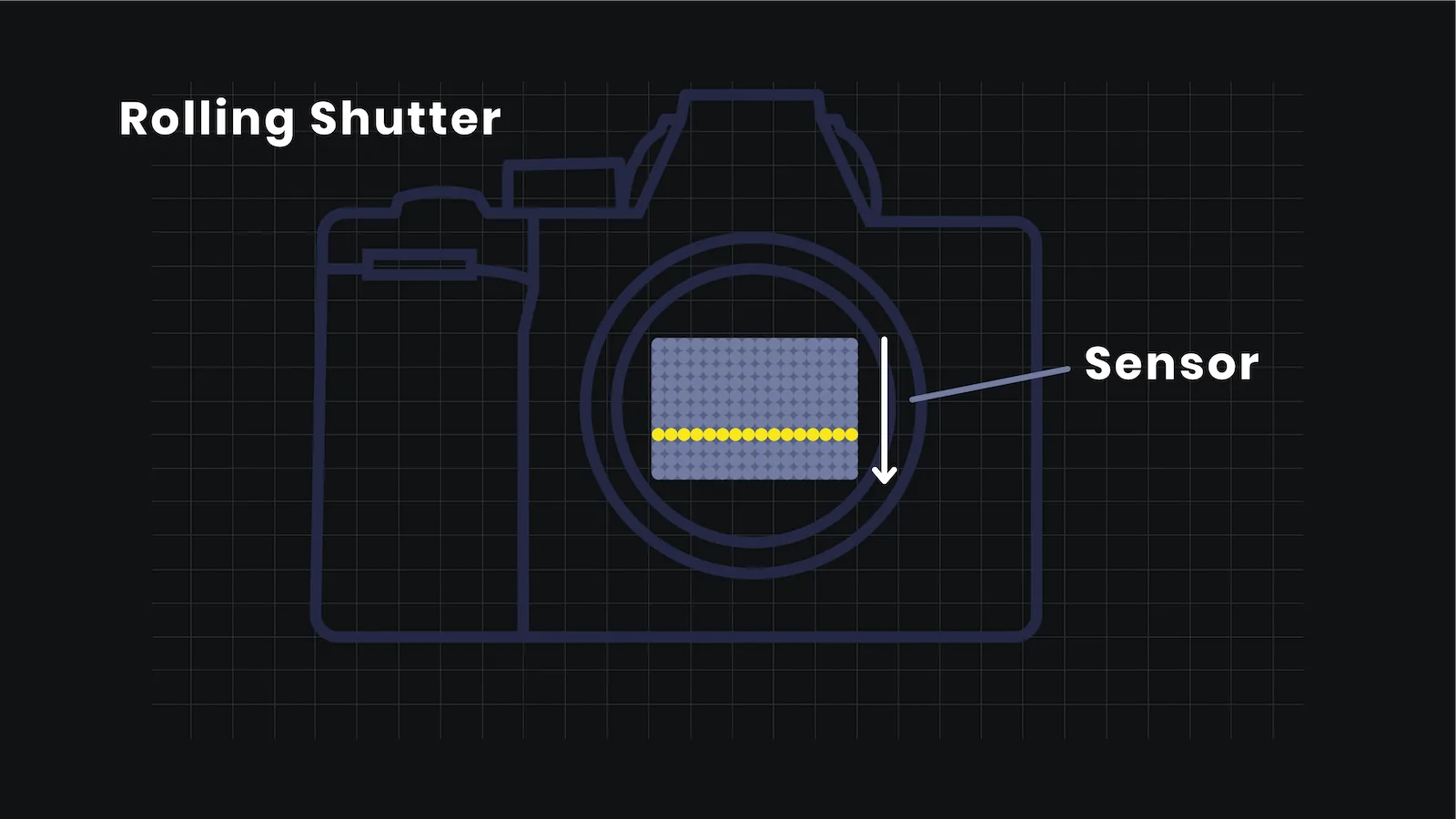
Rolling Shutter
The issue with rolling shutters is that because they record light sequentially, there is a chance that the image can be distorted. An equal amount of light is captured but each pixel captures a different moment. The difference can be fractions of a second but it's enough to notice.
Distortion from a Rolling Shutter
Global Shutter
With a global shutter, every pixel is turned on simultaneously. This basically eliminates the unwanted distortions from a rolling shutter. The downsides to using a global shutter are that they often have a lower dynamic range and don't work as well in low-light situations.
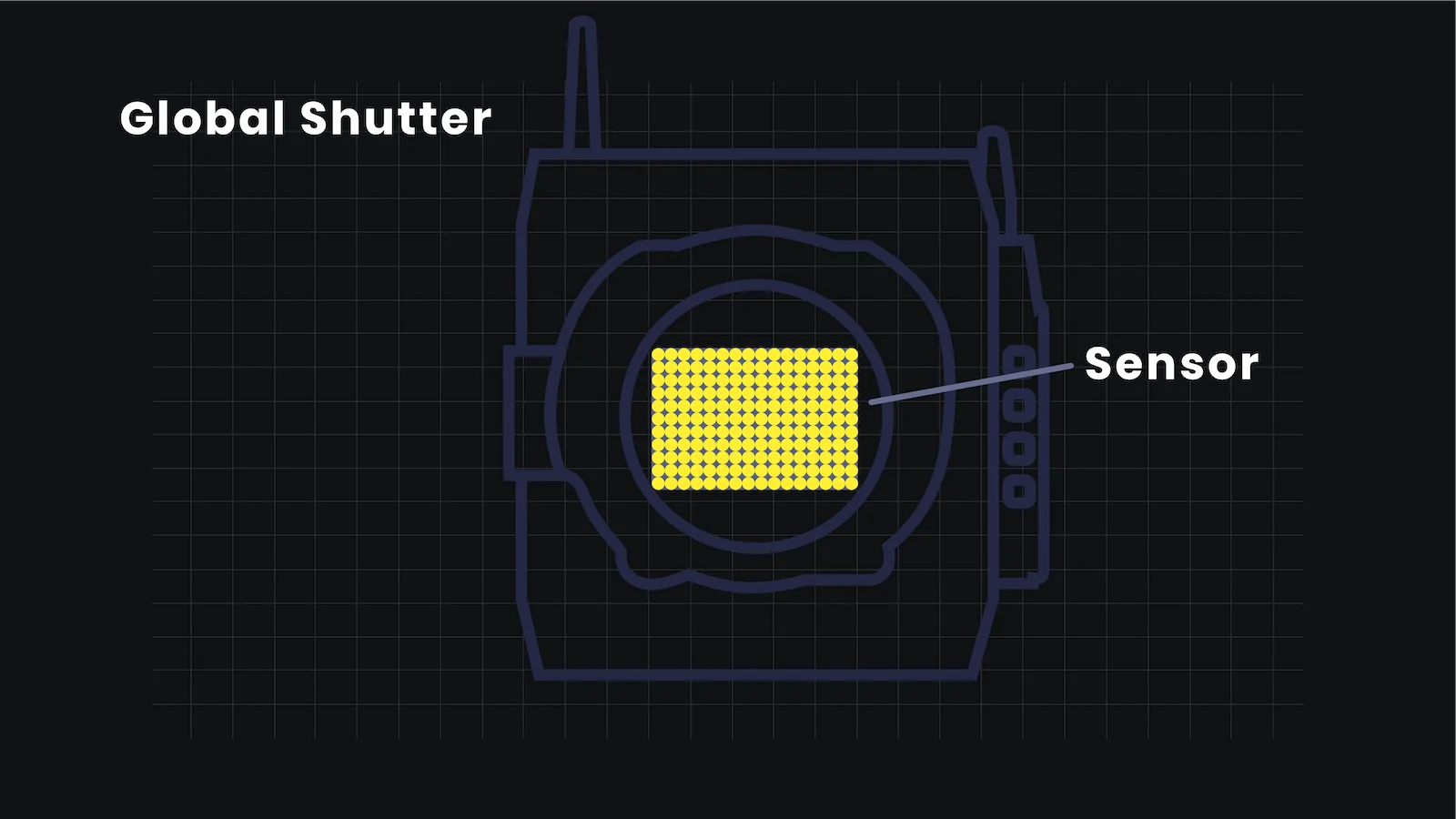
Global Shutter
As mentioned before, most digital cameras have both a mechanical and digital shutter. But why both? Wouldn't one or the other be sufficient? The short answer is that digital shutters have certain power and capturing requirements. The addition of a mechanical shutter allows for less power usage and allows the pixels extra time to relay their information to the memory cards faster.
Shutter Angle Explained
Shutter angle vs shutter speed
In truth, shutter angle and shutter speed are the same thing — they're just measured differently. Shutter speed is measured in time (typically fractions of a second) and shutter angle is measure in degrees. For the most part, shutter speed is more applicable to still photography while shutter angle is the go-to designation in film and video.
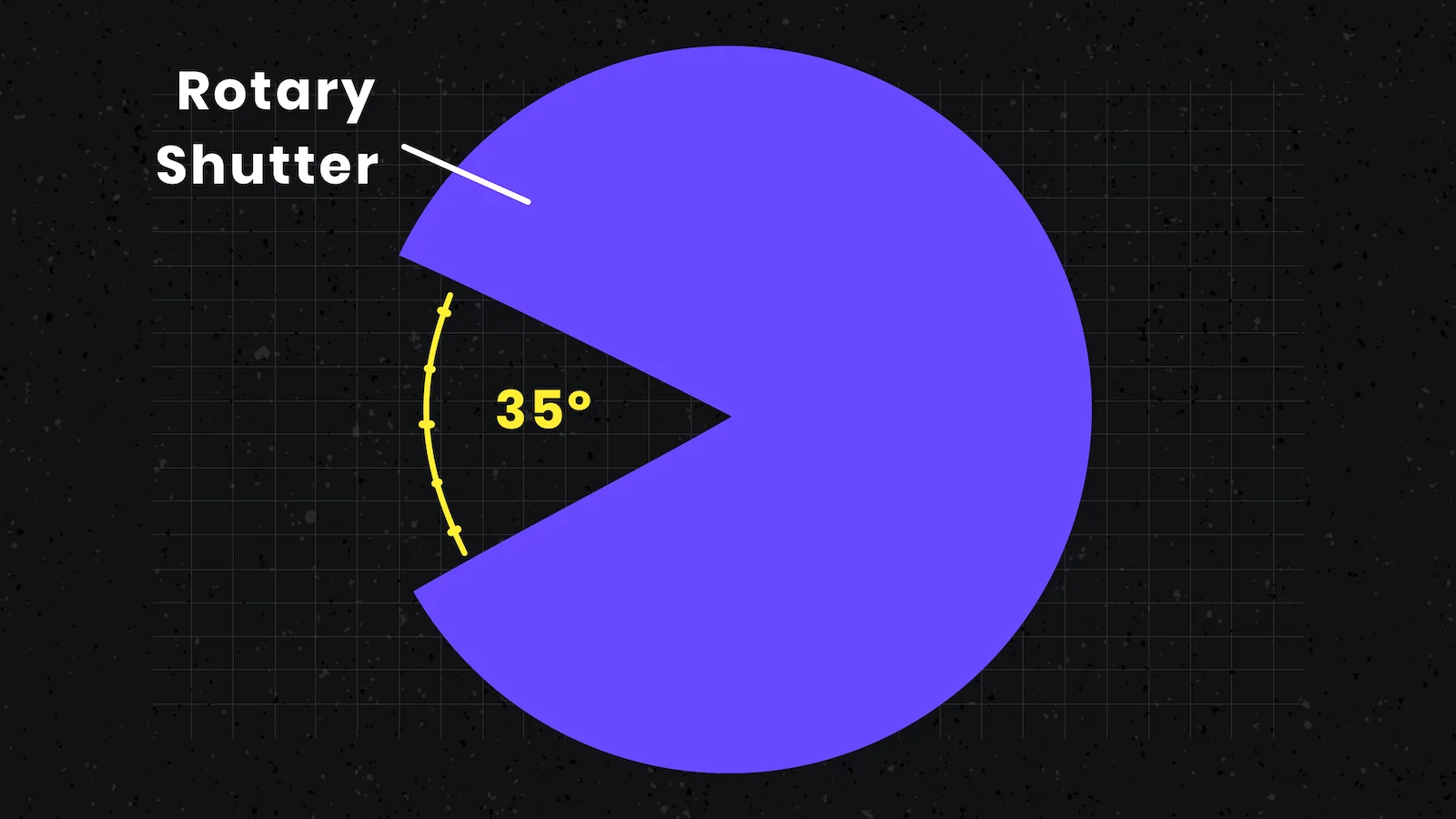
Shutter Angle Explained
This video does a great job of explaining why shutter angle is better than shutter speed when it comes to shooting video.
Shutter angle vs shutter speed
The benefit of using shutter angle vs shutter speed is simply to avoid doing complicated math. Since shutter speed is measured in fractions of a second, any adjustment to the frame rate will require an equal adjustment to the shutter.
For example, let's say you're shooting at 24fps with a shutter speed of 1/48th of a second (which is a 180 degree shutter angle). If you want to increase your frame rate to 48fps and you want the same level of motion blur, you'll have to adjust your shutter speed to the equivalent speed. Since we doubled our frame rate, we have to double our shutter speed from 1/48th to 1/96th.
Or, if you use shutter angle, you can just leave the setting at 180 degrees and no matter what frame rate you choose, your camera will keep that ratio between frame rate and shutter speed locked in.
Cinematic Shutter Speed
The 180 degree shutter rule
When shooting film or video, there's a certain "look" that many image-makers are after. You've probably heard of "cinematic video," or the way motion is captured that mimics actual film. To get this, all you need to do is follow the 180° Shutter Rule.
The rule explains the relationship between shutter speed and frame rate. Frame rate (frames per second or FPS) is the frequency (rate) at which consecutive images called frames appear on a display. Let's define the rule and see how shutter speed and frame rate work together.
180° Shutter Rule Definition
what is the 180-degree shutter rule?
The 180-degree rule states that your shutter speed should be set to double your frame rate. This is a film industry standard and is sometimes referred to as "cinematic shutter speeds."
*Most DSLR’s have the option to shoot at 1/50th but not 1/48th, so if you're shooting at 24 frames per second, it's best to set the shutter speed to 1/50th.
Adjusting the shutter angle is a way to "break" the 180° rule. Remember, this is not to be confused with the 180° rule related to staging your scene.
If you have a wide shutter angle, anywhere from 270° to 360°, your shot will appear shaky, and will have greater motion blur. This could be useful for creative purposes depending on the narrative or story you're trying to tell.
Of course, the opposite is true — shooting with a narrower shutter angle, the less motion blur from frame to frame. Here's a video that illustrates these concepts nicely.
Learn shutter speed for video
To recap, a higher shutter speed will give your footage a slightly unnatural look, and sometimes that's what you want. To approximate get a more cinematic look, keep your shutter speed at 1/50th of a second.
The Exposure Triangle can be a tricky concept but we've got a resource that will explain everything. Download our FREE "Ultimate Guide to Exposure" and get started shooting!
Free downloadable bonus
FREE Download
Ultimate Guide to Exposure
The Exposure Triangle is something every photographer and cinematographer needs to master. Download our FREE e-book to get in-depth explanations and tutorials on topics like aperture, ISO, shutter speed, and how to balance these settings to nail perfect exposure every time.
WHAT ELSE TO CONSIDER
Shutter speed & the exposure triangle
When it comes to image-making, there are other things to consider besides shutter speed. This article won’t go in depth into these other components, but they are just as critical. Shutter speed is just one of three settings that constitute the Exposure Triangle. Let's quickly recap the other two critical settings: aperture and ISO.
Aperture
The aperture refers to the opening of the lens. When you hit the shutter release button to take the picture, a hole opens to capture the image. The aperture is the size of that hole. The larger, the more light gets in, and the smaller, the less light. They’re measured in ‘f-stops.’ Moving from one f-stop to another either doubles the size or halves it.
Here's a quick breakdown of aperture's role in creating depth of field.
What is Aperture? • Subscribe on YouTube
As the number increases, the size of the hole actually gets smaller. You’ll see a number like f/2.8 which indicates a bigger aperture whereas something like a f/22 would be a very small aperture.
ISO
ISO measures the amplitude or gain of the camera's digital sensor to light, (or the film’s sensitivity, if using a traditional film camera). The higher the number indicates the sensor is more sensitive to light — 100, 200, 400, 800, etc.
100 is considered standard. Higher numbers are best for darker situations. But keep in mind, higher ISO could cause grainy images. Using all three ISO, aperture, and shutter speed help to balance this. Here's a quick breakdown of ISO's role in the Exposure Triangle.
Ultimate Guide to ISO • Subscribe on YouTube
A higher ISO would also work well if you are capturing a sporting event that’s in lower light. If your subject is moving fast, you can’t have a slow shutter speed or the image will be blurry. If you want a sharp, well-lit image, you could raise the ISO for light, and keep a fast shutter speed to freeze the image.
Watch the video below, of all three components — shutter speed, aperture, and ISO, working together.
Using shutter speed, ISO, and aperture together
We briefly mentioned frame rates regarding shutter speed for videography. Our next post dives into how to manage and control your frame rates for the best shot possible.
Free downloadable bonus
FREE Download
Ultimate Guide to Exposure
The Exposure Triangle is something every photographer and cinematographer needs to master. Download our FREE e-book to get in-depth explanations and tutorials on topics like aperture, ISO, shutter speed, and how to balance these settings to nail perfect exposure every time.
Up Next
How a lens aperture works
This article mentioned aperture and how it works with shutter speed. But if you want more control over your photos and videos, you'll need to go a bit deeper. Knowing all three points on the exposure triangle is critical to fully grasp your capabilities with the camera.
Up Next: What is aperture? →
Showcase your vision with elegant shot lists and storyboards.
Create robust and customizable shot lists. Upload images to make storyboards and slideshows.
